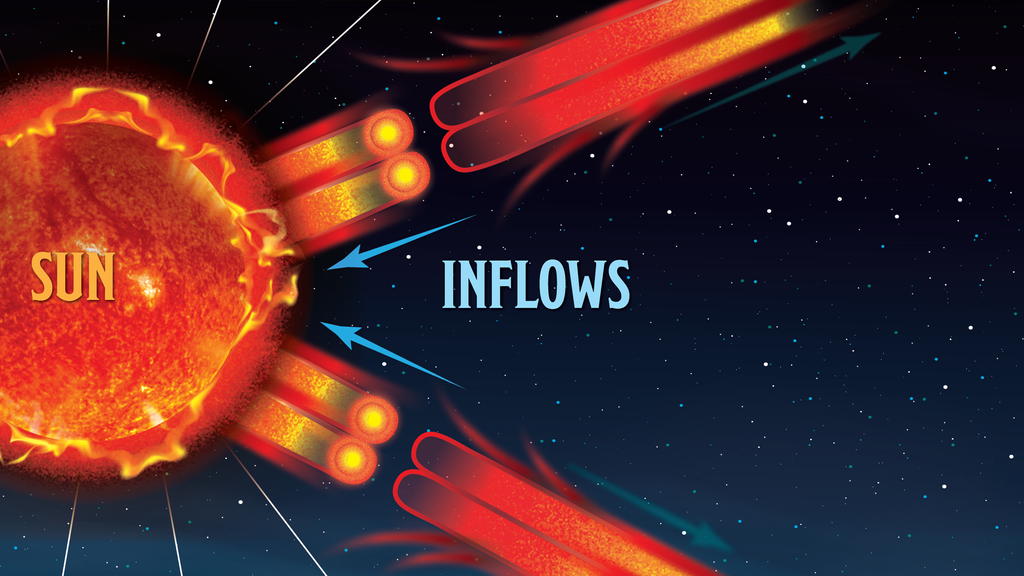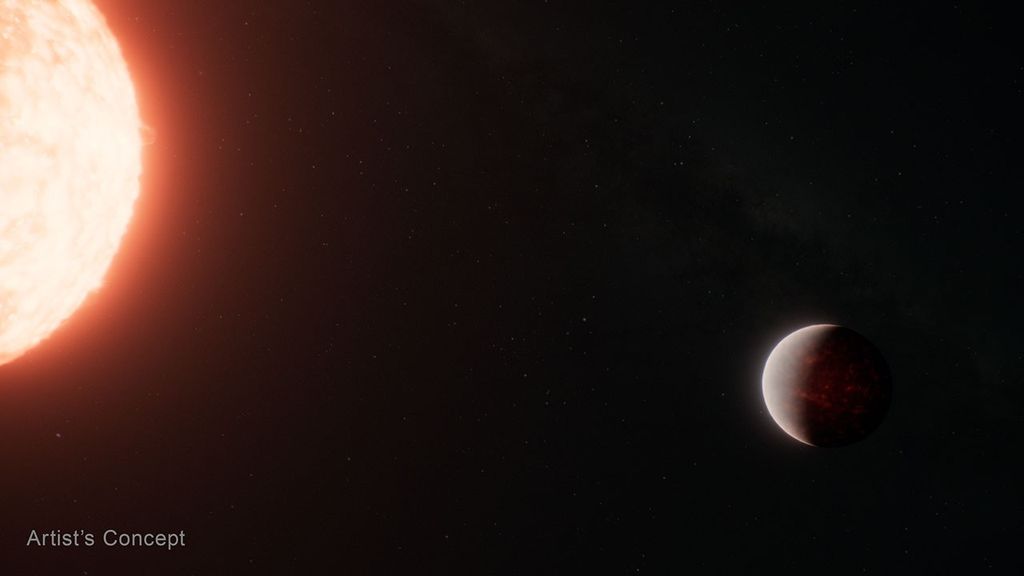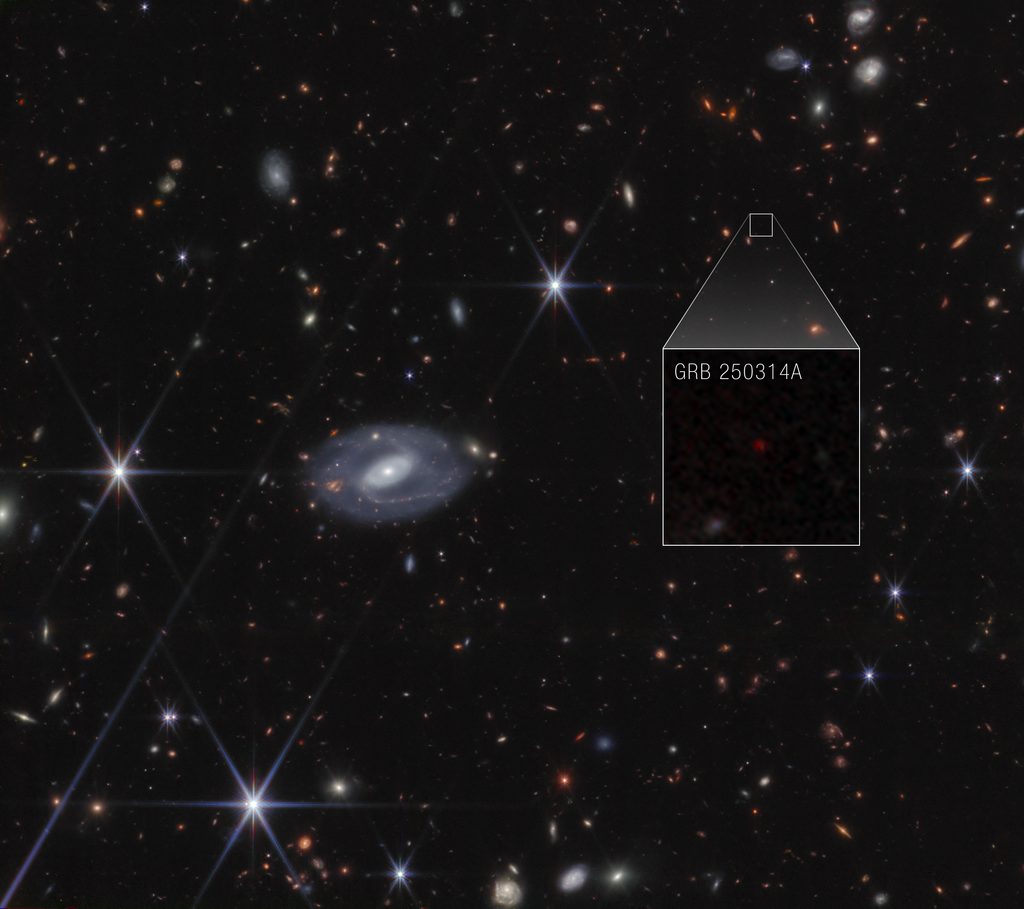1 min read
Supersonic Comet-Like Objects (right) in Heart of the Cartwheel Galaxy (left)
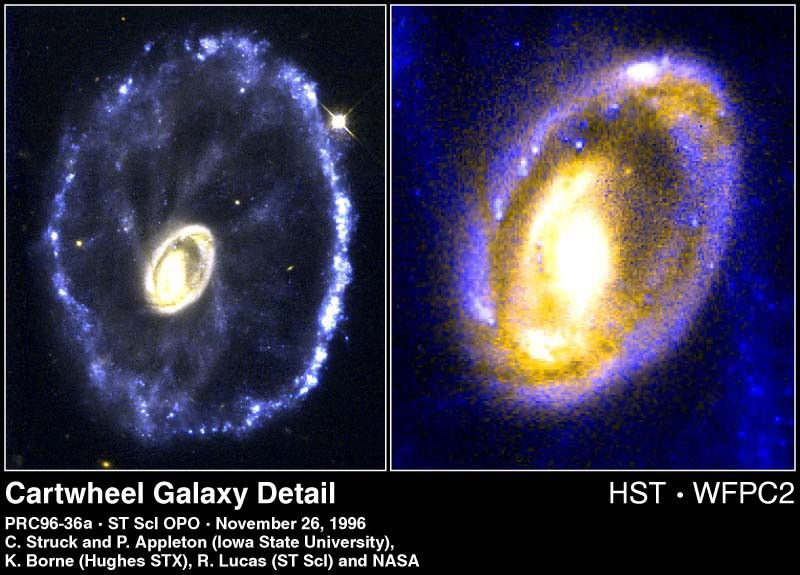
Researchers analyzing the Hubble Space Telescope's dramatic pictures of the Cartwheel galaxy have discovered immense comet-like clouds of gas speeding through the heart of the galaxy at nearly 700,000 mph.
Located 500 million light-years away in the constellation Sculptor, the galaxy looks like a wagon wheel. The galaxy's nucleus is the bright object in the center of the image; the spoke-like structures are wisps of material connecting the nucleus to the outer ring of young stars. The galaxy's unusual configuration was created by a nearly head-on collision with a smaller galaxy about 200 million years ago.
This close-up image of the galaxy's nucleus reveals the comet-like knots of gas. These knots are mostly confined to the core's left side and appear as white streaks inside the blue ring. The "heads" are a few hundred light-years across; the tails are more than 1,000 light-years long, the longest of which is nearly 5,000 light-years. The structures look like comets because they probably were spawned by a collision between high-speed and slower-moving material. This collision created an arrowhead-shaped pattern called a bow shock, which is similar to the wake of a boat speeding across a lake.
About the Object
- R.A. PositionR.A. PositionRight ascension – analogous to longitude – is one component of an object's position.00h 37m 41.09s
- Dec. PositionDec. PositionDeclination – analogous to latitude – is one component of an object's position.-33° 42' 59.0"
- Object NameObject NameA name or catalog number that astronomers use to identify an astronomical object.Cartwheel Galaxy
- Release DateNovember 26, 1996
- Science ReleaseHubble Spies Supersonic “Comet-Clouds” in Heart of Galaxy
- CreditCurt Struck and Philip Appleton (Iowa State University), Kirk Borne (Hughes STX Corporation), and Ray Lucas (Space Telescope Science Institute), and NASA
Related Images & Videos
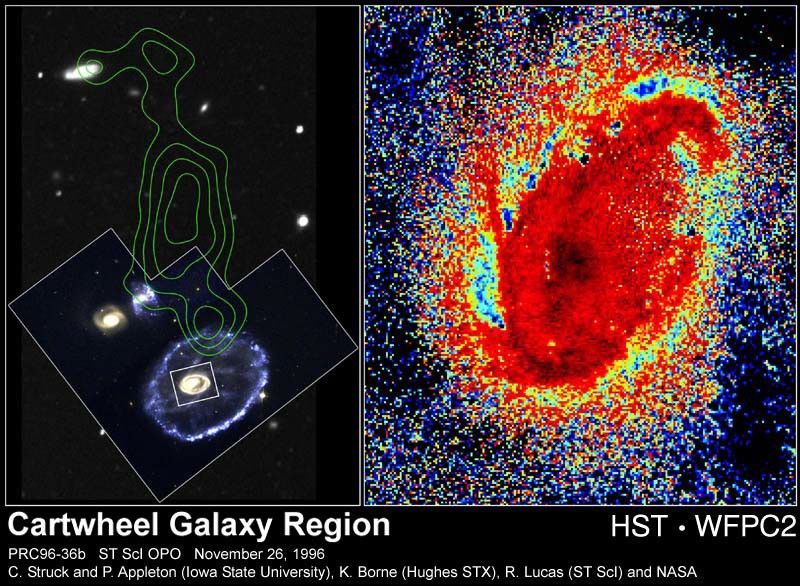
Hubble Images Reveal Supersonic Comet-Like Objects in Heart of Galaxy
Researchers analyzing the Hubble Space Telescope's dramatic images of the Cartwheel galaxy have discovered immense comet-like clouds of gas speeding at nearly 700,000 mph through the galaxy's core. [Image on left] - The Cartwheel is part of a group of four galaxies, as shown in...
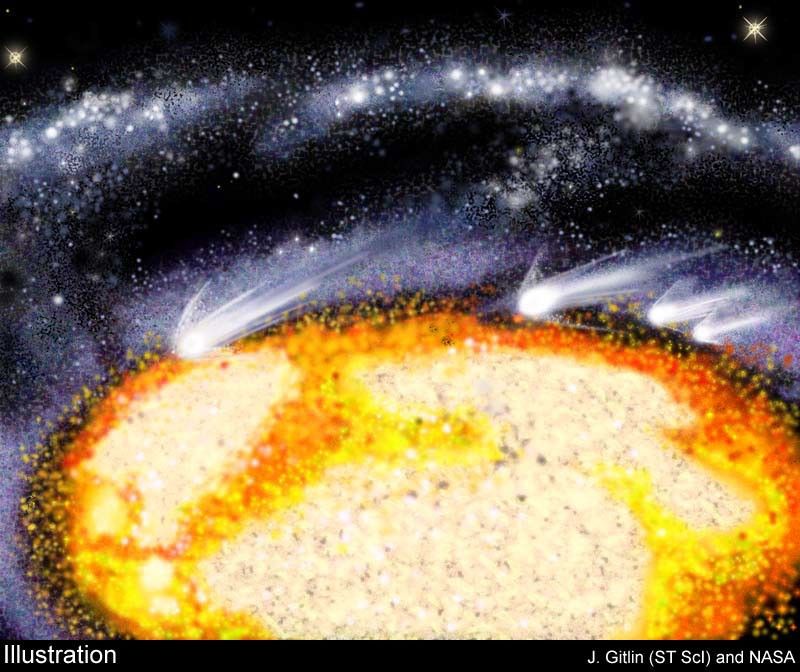
Illustration of Comet-Like Objects Racing Through Galaxy's Center
This artist's illustration offers a "window seat" view of comet-like clouds of gas racing through the heart of the Cartwheel galaxy at 700,000 mph. The large orange and yellow pancake-like object is the galaxy's core, and the white streaks along its edges are the comet-like...
Share
Details
Claire Andreoli
NASA’s Goddard Space Flight Center
Greenbelt, Maryland
claire.andreoli@nasa.gov










